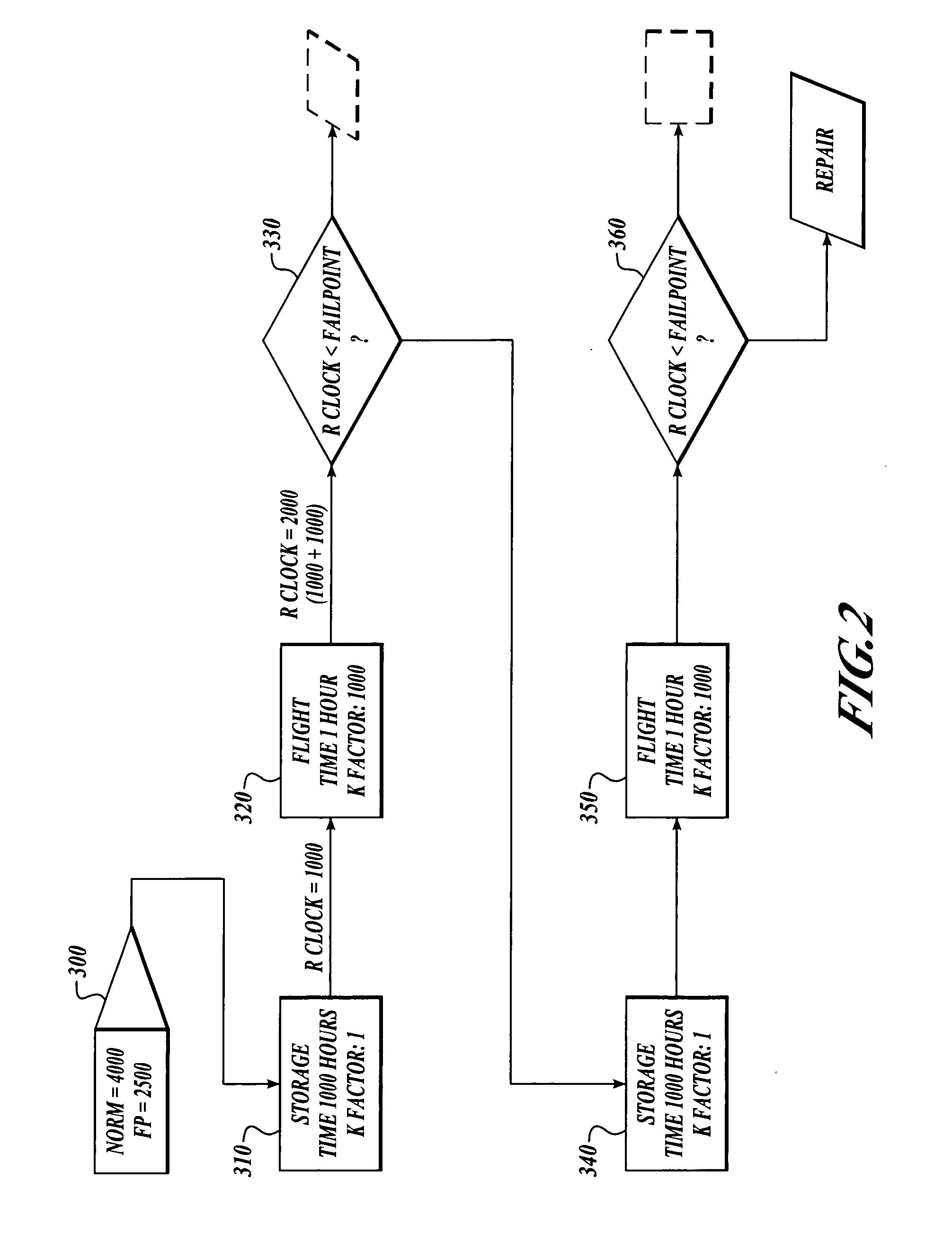Lifecycle support software tool
a software tool and lifecycle technology, applied in the field of software, can solve the problems of multiple component failure of products, inability to meet the mission of automobiles, and inability to meet the needs of consumers, etc., and achieve the effect of reducing support costs, facilitating decision-makers to be flexible, and saving costs
- Summary
- Abstract
- Description
- Claims
- Application Information
AI Technical Summary
Benefits of technology
Problems solved by technology
Method used
Image
Examples
example
[0039] This example relates to an aircraft and is greatly simplified to illustrate an aspect of the invention. In this instance, the aircraft as a whole is the “component” to which aging factors are applied, depending upon the environment to which it is exposed.
[0040] In this example, in block 300, the MTBF (mean time between failures) was calculated as 4,000 hours, and a randomized fail point (FP) of 2,500 hours was determined for the aircraft using process simulation techniques. Thus a predicted failure for this particular aircraft is when the reliability clock, i.e. the sum of all [(K (aging factor) for environments to which it is exposed)×(time period of exposure)], is equal to 2,500.
[0041] In block 310 the aircraft is stored for 1,000 hours at an aging factor K=1.0; so the reliability clock is 1,000 after storage. Then, at block 320, the aircraft flies for 1.0 hour, at conditions with aging factor K=1,000. Thus, after block 320, the reliability clock is 1,000+(1.0×1,000)=2,00...
PUM
 Login to View More
Login to View More Abstract
Description
Claims
Application Information
 Login to View More
Login to View More - R&D
- Intellectual Property
- Life Sciences
- Materials
- Tech Scout
- Unparalleled Data Quality
- Higher Quality Content
- 60% Fewer Hallucinations
Browse by: Latest US Patents, China's latest patents, Technical Efficacy Thesaurus, Application Domain, Technology Topic, Popular Technical Reports.
© 2025 PatSnap. All rights reserved.Legal|Privacy policy|Modern Slavery Act Transparency Statement|Sitemap|About US| Contact US: help@patsnap.com



